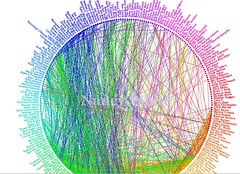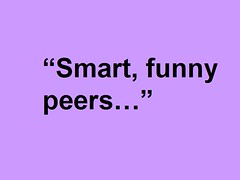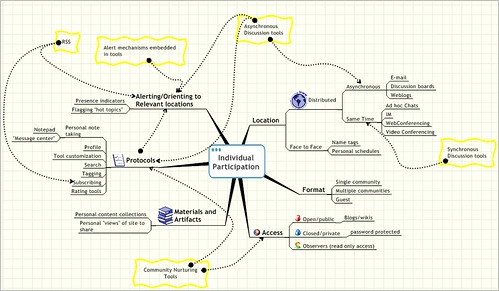 Connections make the world go round. I can’t learn and improve without the things I learn from my network and beyond. Especially the interesting fringes. This requires some sort of “line of sight” to that network.
Connections make the world go round. I can’t learn and improve without the things I learn from my network and beyond. Especially the interesting fringes. This requires some sort of “line of sight” to that network.
With that, I’m pleased to announce the launch of the Community & Networks Connection. This isn’t a community, and not as loose and open as a network. It is in that juicy place in between communities and networks that helps to collect and organize useful content from blogs and other web sites, from people who care about, and are passionate to understand these phenomenon we call “communities” and “networks.” The goal of this page is to create a place where it’s easy to find current and highly relevant content. And perhaps to stimulate a new connection between you and these brilliant people.
 You can get a sense of the power of the site by visiting the site and clicking a keyword on the left. For example, if you look at the page on Social Media you find:
You can get a sense of the power of the site by visiting the site and clicking a keyword on the left. For example, if you look at the page on Social Media you find:
- Keywords on the left ordered according to their relationship to the current term. So you can see that Virtual Community, Tags, RSS, Facebook, Twitter and other such terms all relate heavily to the concept of social media.
- The top of the page has the latest posts. What’s new?
- Below that you find top posts based on various social signals. As the site runs, it will get better at finding great content.
As a long-time blogger, I’m intrigued by a few of the specific features offered to participating bloggers. Tony tells me this will bring more trafic to participating sites. I need some lessons and stimulus, because I tend to ignore things that could bring more people to my site and that is pretty silly of me. (Edited in later: for more posts about HOW this works, see Tony’s post, and John Tropea’s post. )
If you go to my blog’s content page, Full Circle, the page shows on the left the keywords that I write about a fair amount. Keywords like Online Interaction, Technology Stewardship, Catalysts are all pretty good indicators. These same keywords are listed in the new widget in my sidebar provided by the site.
There’s also a page that shows the Best Content from Full Circle based on social signals. These will improve over time. (Though I am the first to roll my eyes at “best” — but heck, it is a useful word at the moment. Do you have another suggestion as you use the site?)
 The best part of this is this is not just about my content. In fact, I’m just a drop in the bucket. I’m not alone. There is quite a network that is participating in the launch – from people who are close friends and trusted colleagues, to interesting people I try and follow.
The best part of this is this is not just about my content. In fact, I’m just a drop in the bucket. I’m not alone. There is quite a network that is participating in the launch – from people who are close friends and trusted colleagues, to interesting people I try and follow.
It’s fun to look at some of the differences in keywords for some of my fellow participants. For example:
 All of this technology underneath the “hood” comes from Tony Karrer. I know that he has more features planned. Certainly, Tony and I would like to hear any suggestions you have for how to make this site better. Comment here if you have ideas of other blogs or sites I should consider including.
All of this technology underneath the “hood” comes from Tony Karrer. I know that he has more features planned. Certainly, Tony and I would like to hear any suggestions you have for how to make this site better. Comment here if you have ideas of other blogs or sites I should consider including. Take a peek.
Subscribe to the whole shebang or follow one key word. Lets find out what we can discover and learn together.
participants of the workshop to plot on a radar chart, which I’d drawn on a whiteboard, where they thought the community was currently and then do this again for where they would like to see the community of 12 months time. It generated a terrific conversation and a feel of mutual purpose. Here is what the result looked like.

 You can get a sense of the power of the site by visiting the site and clicking a keyword on the left. For example, if you look at the page on
You can get a sense of the power of the site by visiting the site and clicking a keyword on the left. For example, if you look at the page on  The best part of this is this is not just about my content. In fact, I’m just a drop in the bucket. I’m not alone. There is quite a network that is participating in the launch – from people who are close friends and trusted colleagues, to interesting people I try and follow.
The best part of this is this is not just about my content. In fact, I’m just a drop in the bucket. I’m not alone. There is quite a network that is participating in the launch – from people who are close friends and trusted colleagues, to interesting people I try and follow. All of this technology underneath the “hood” comes from
All of this technology underneath the “hood” comes from  This seminar is being organized by some great friends and colleagues.
This seminar is being organized by some great friends and colleagues.


 Sylvia Currie
Sylvia Currie